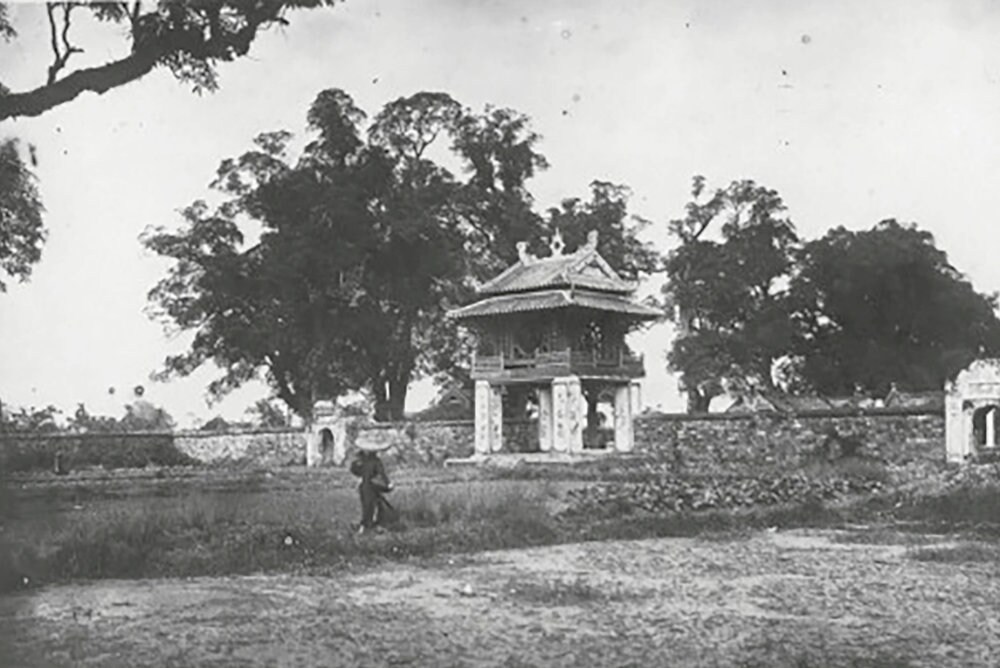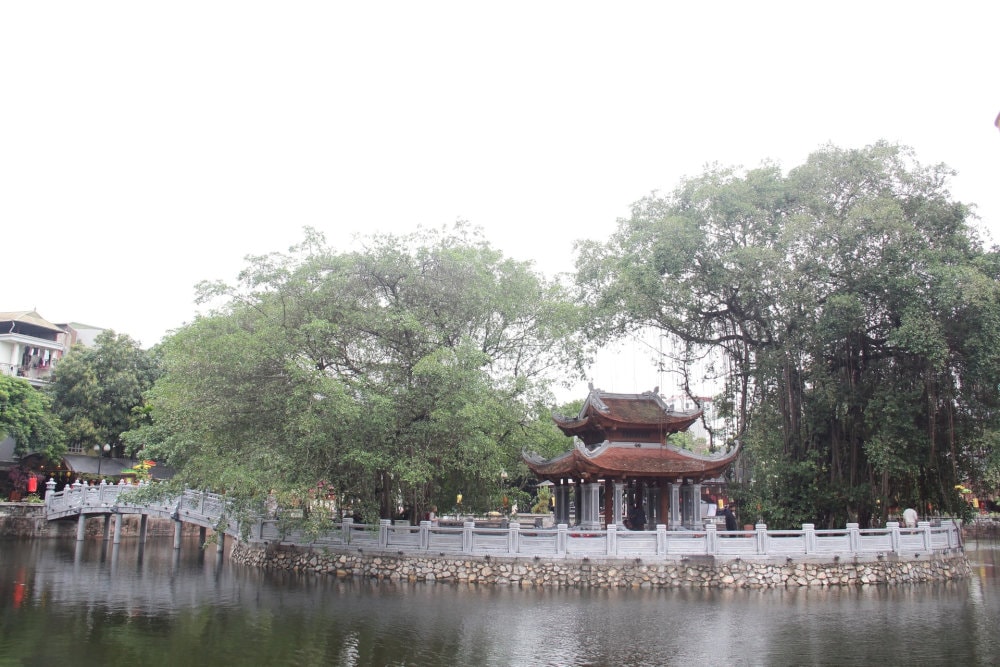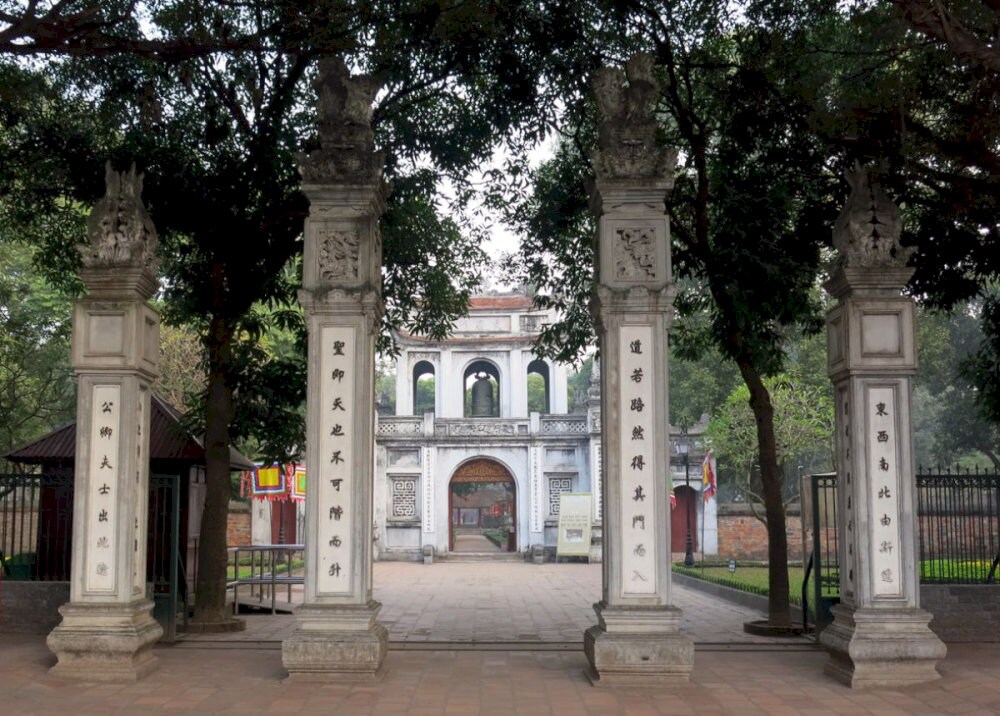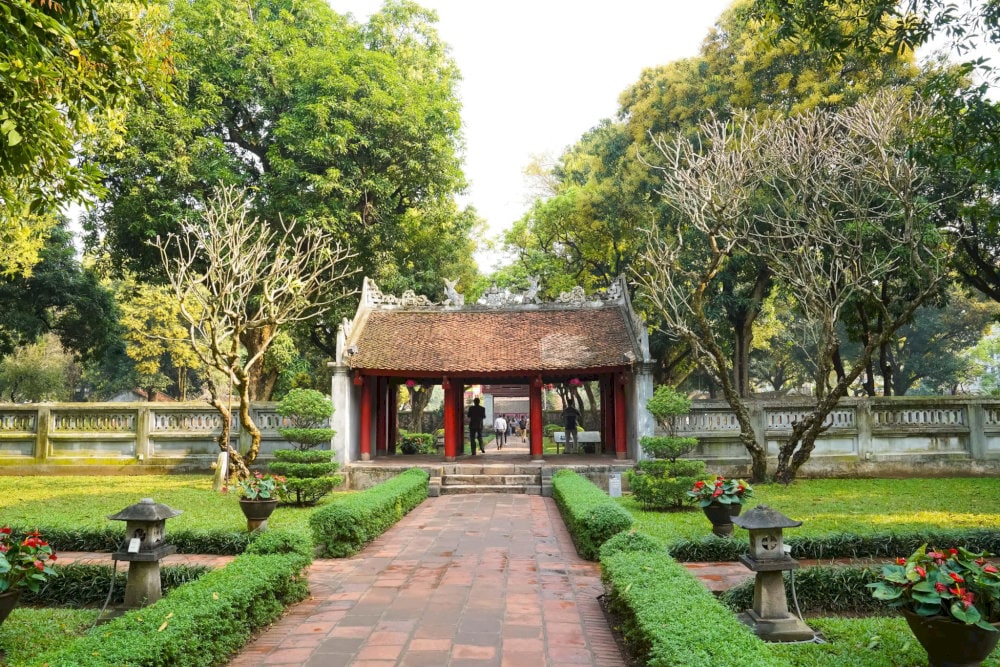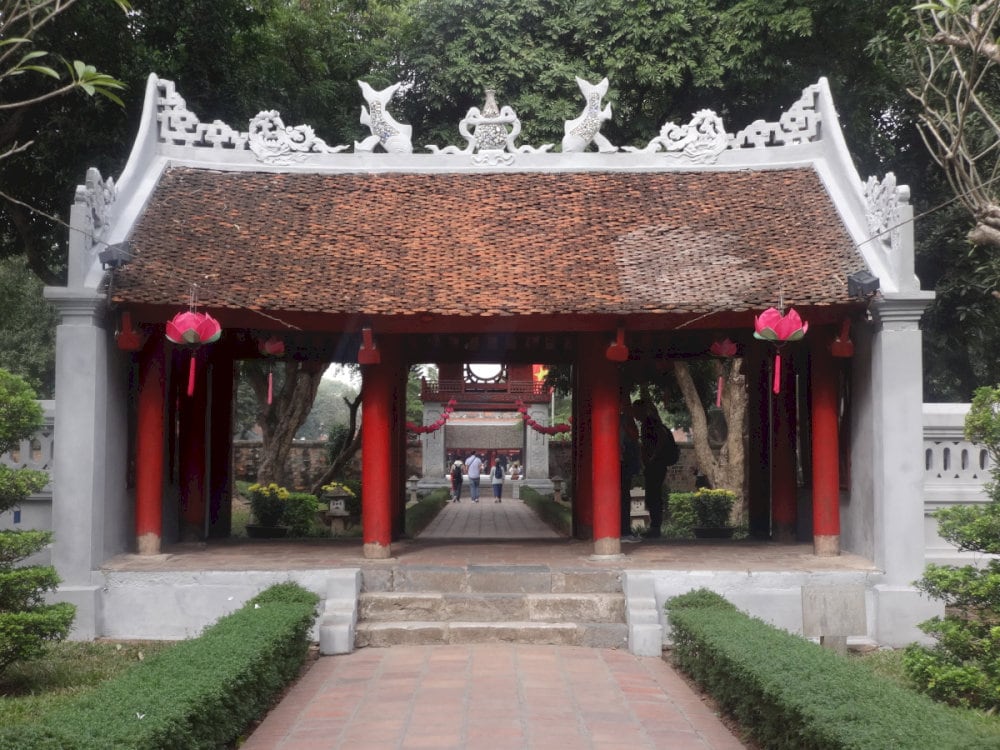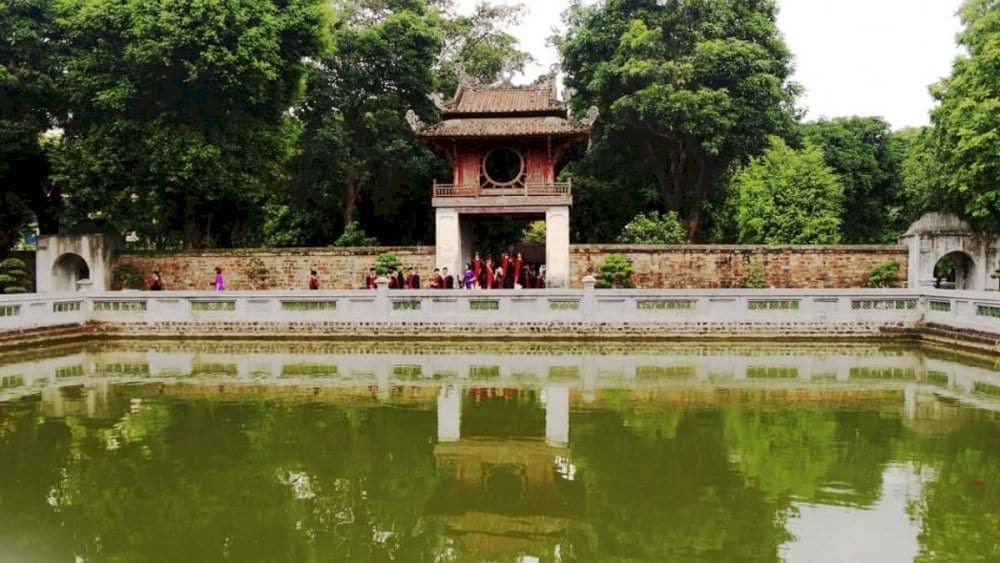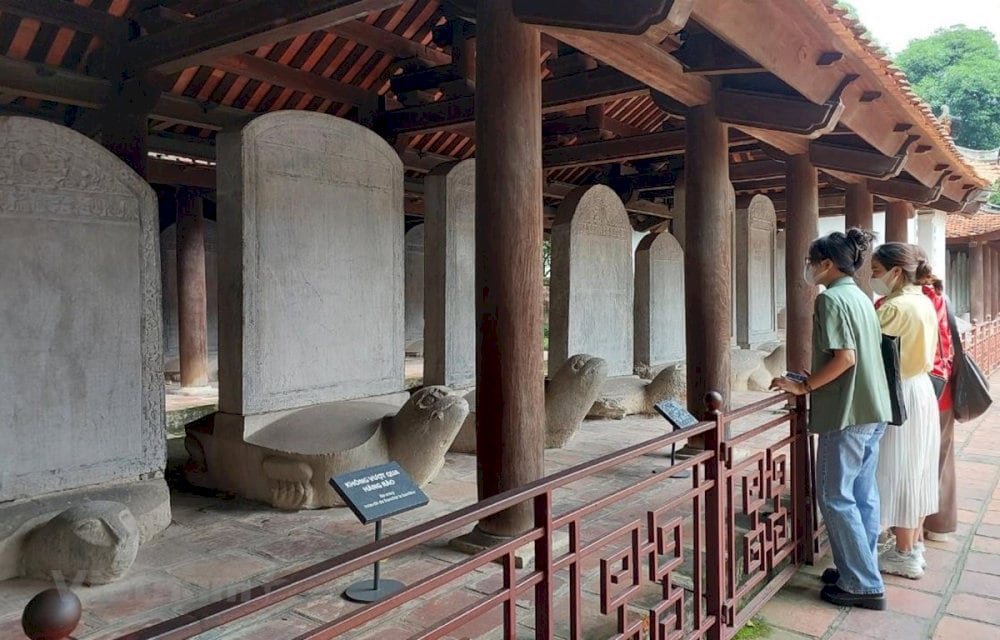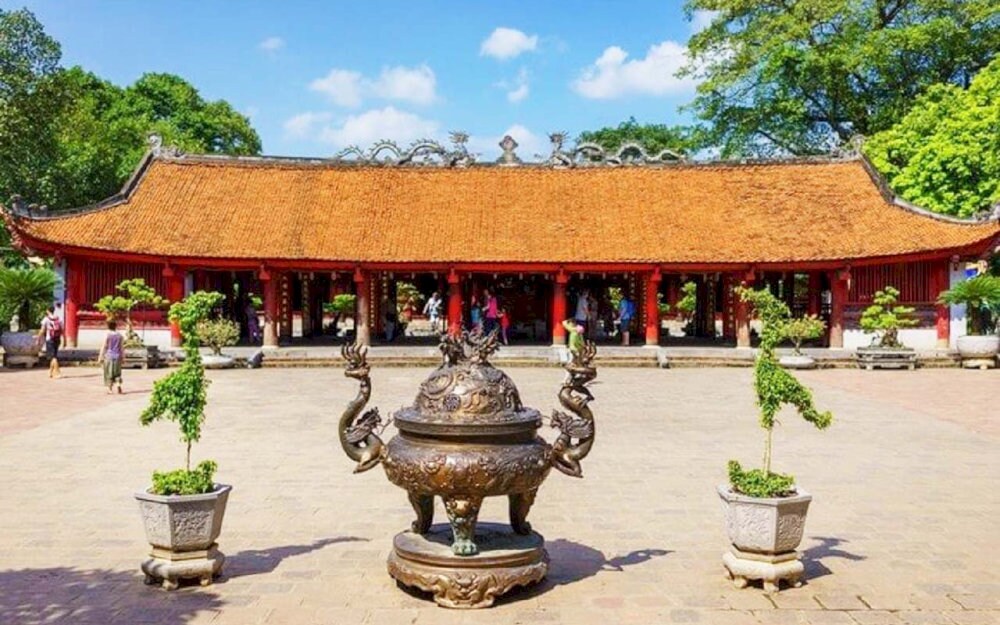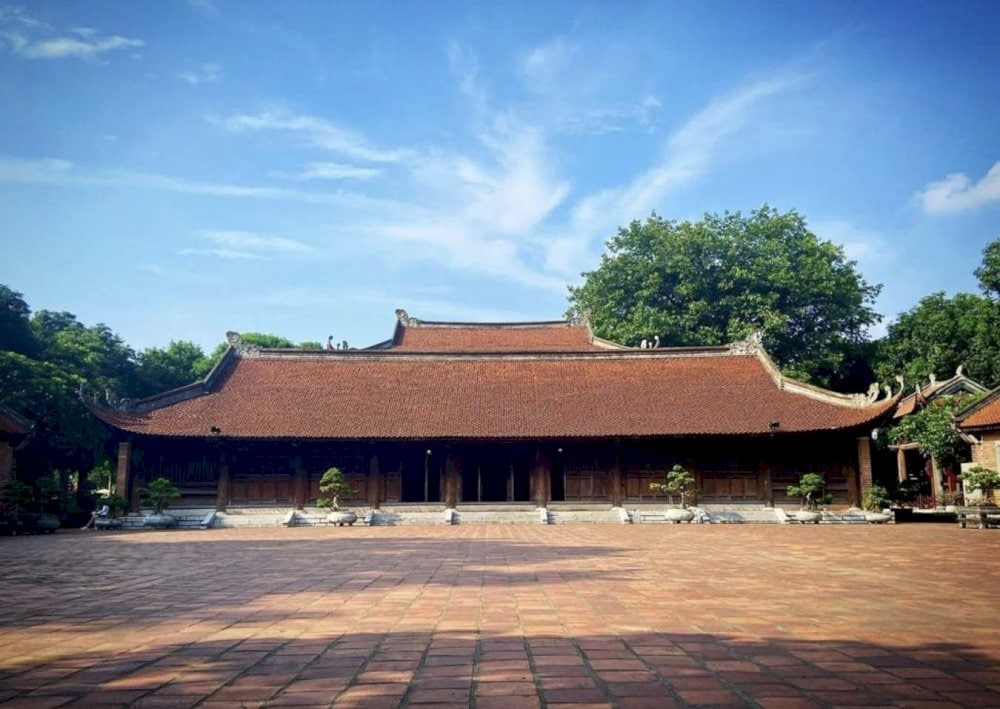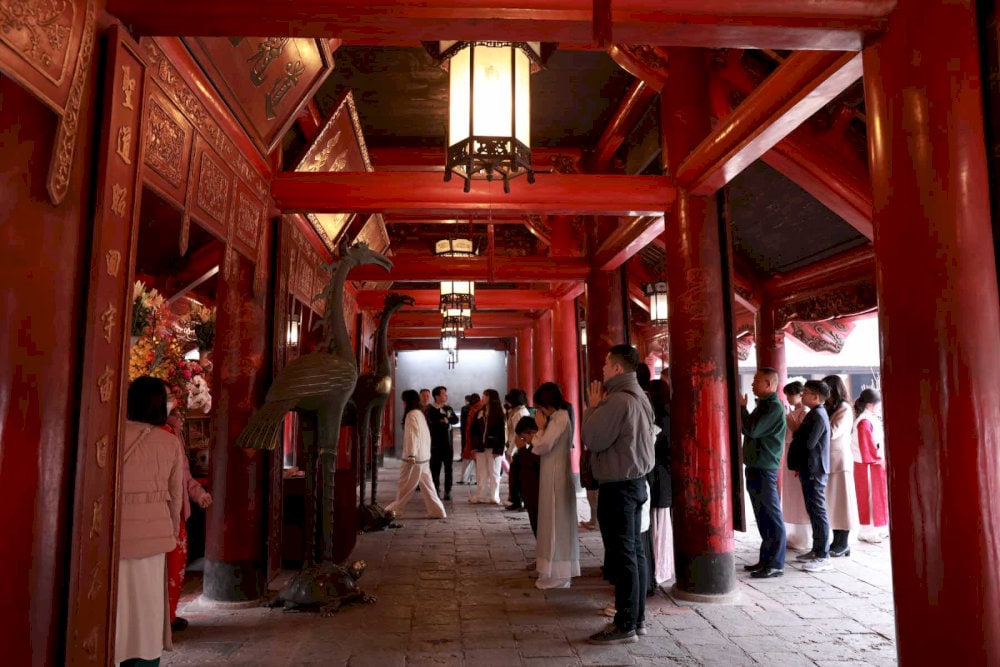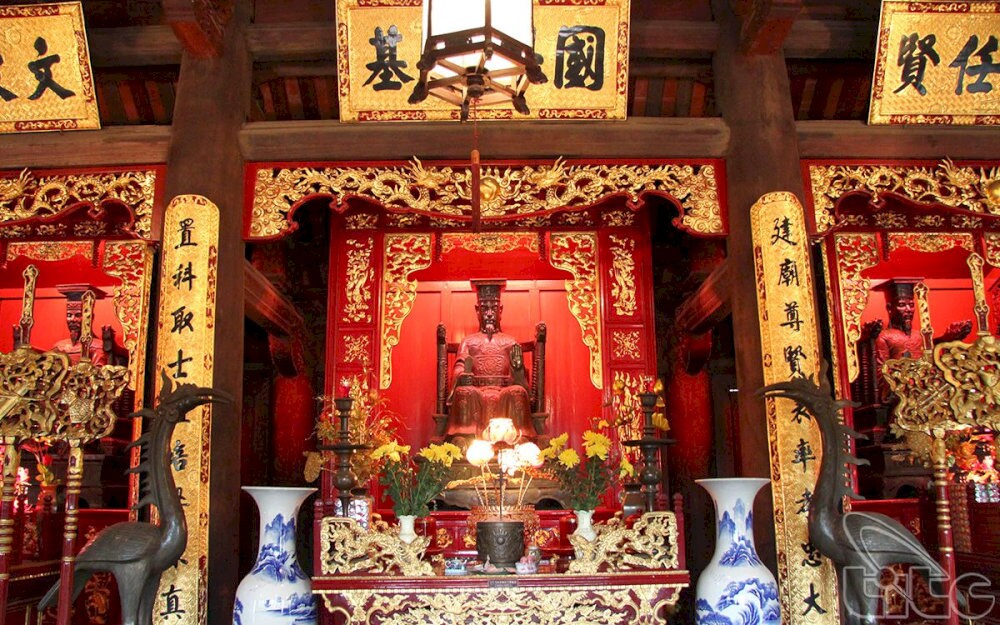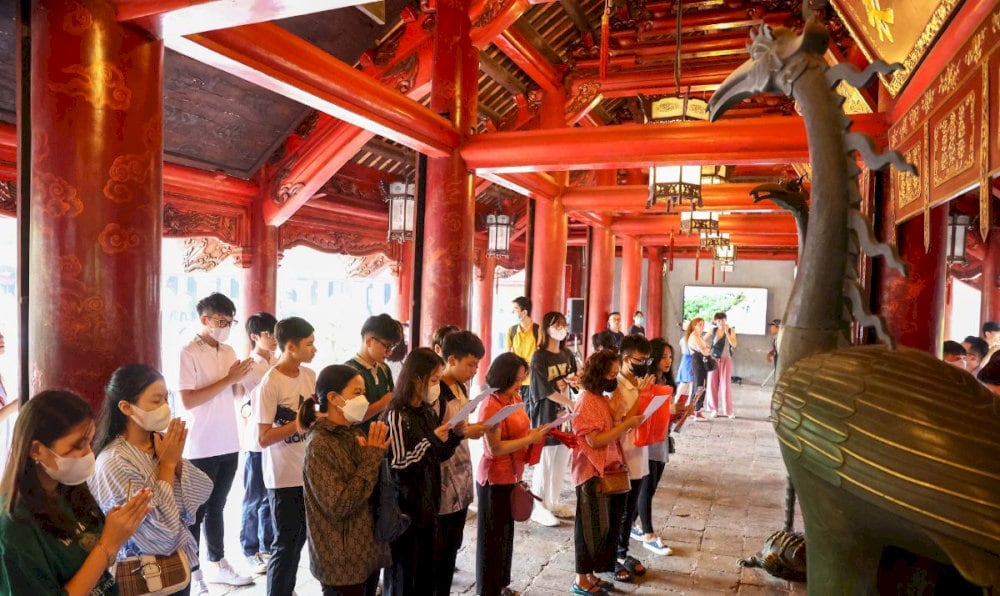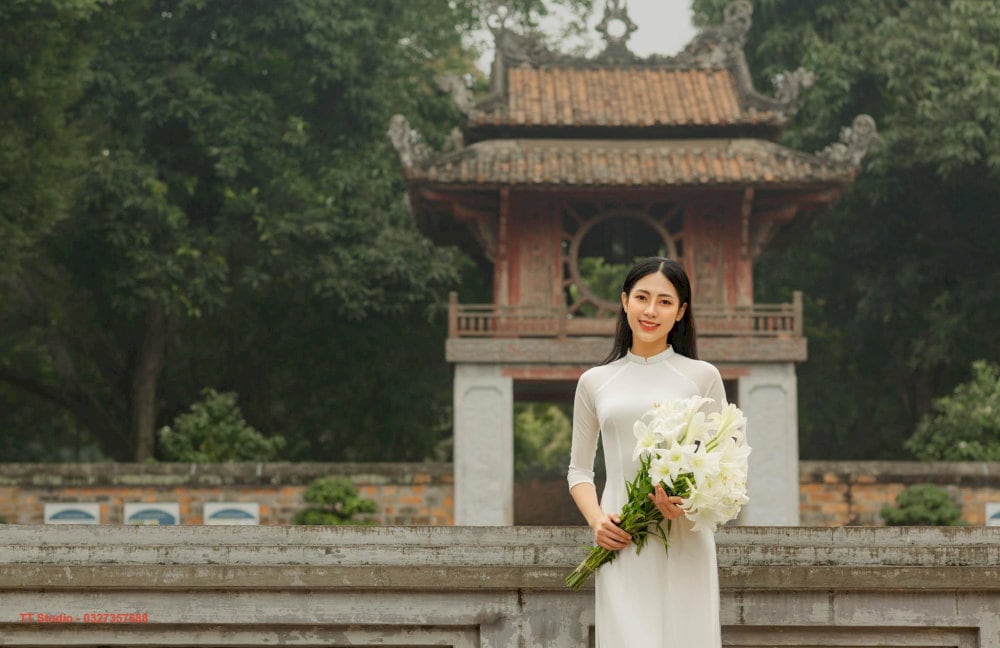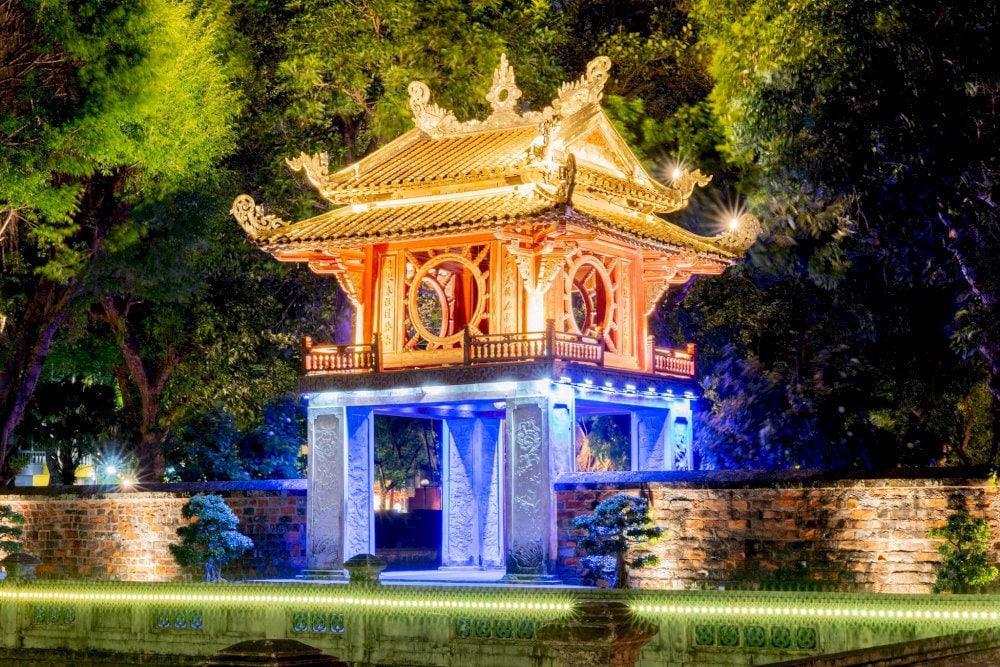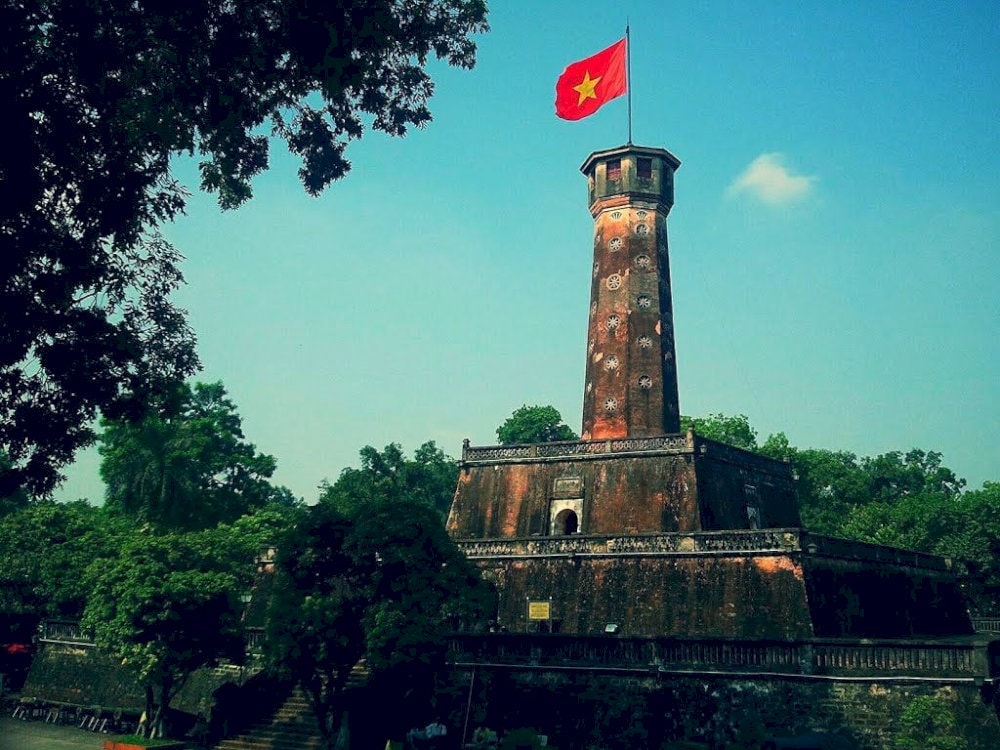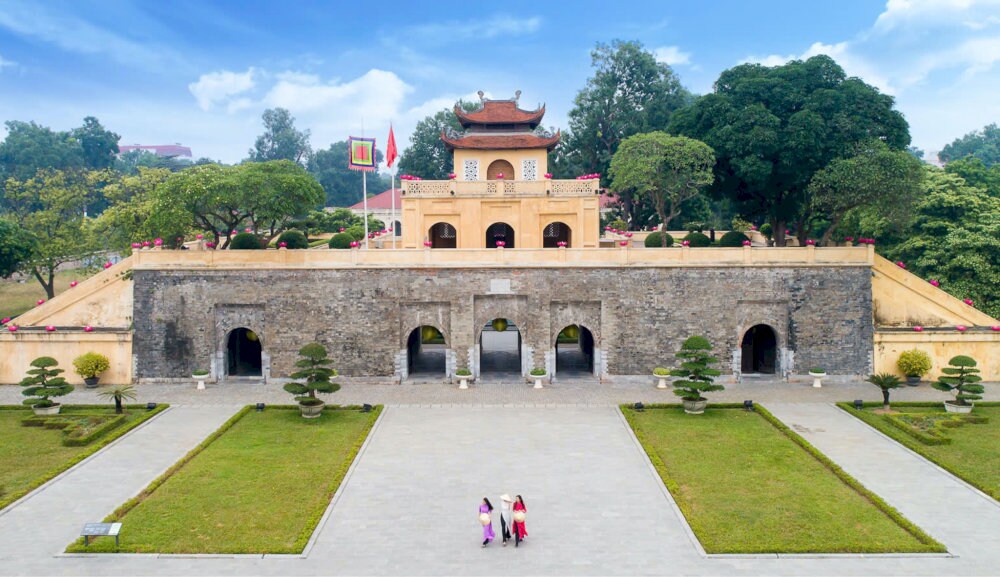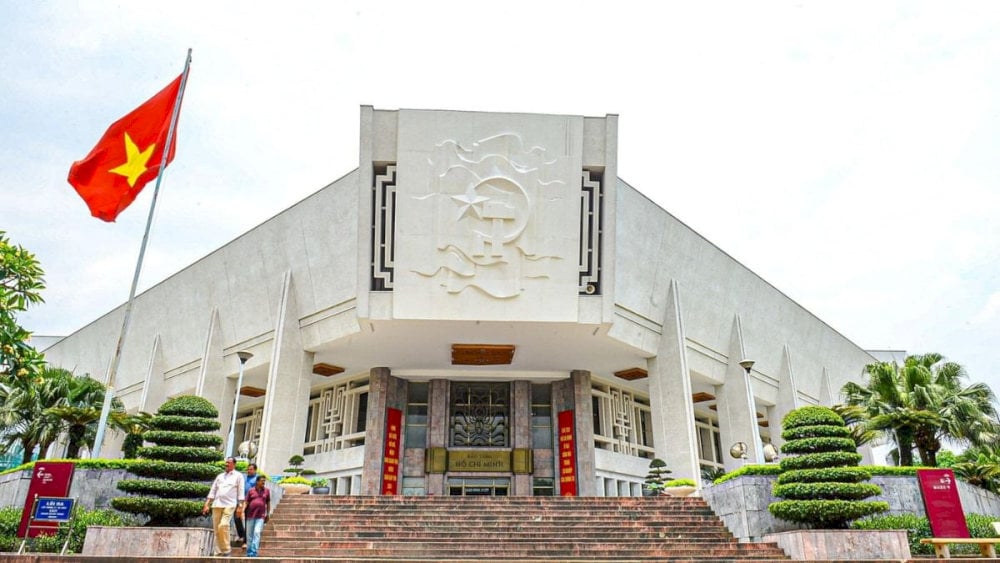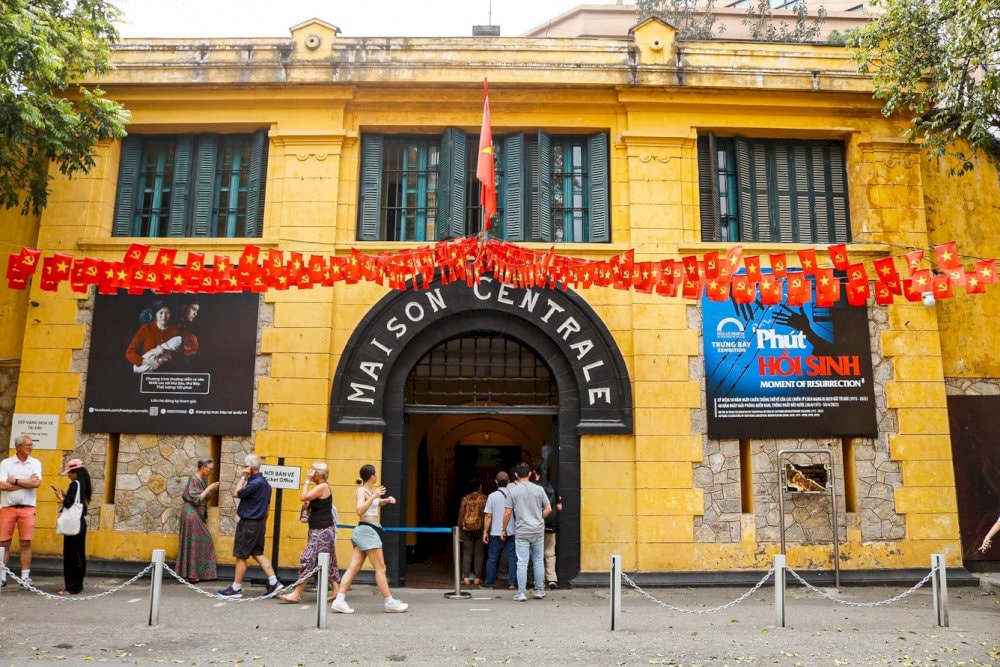Temple of Literature bears a strong historical mark. (Source: Internet)
Cultural values: Besides the long-standing historical values associated with many dynasties, the Temple of Literature also brings great cultural values.
- In 1962, the Temple of Literature - Imperial Academy was ranked as a National Monument. Here, there are 82 doctoral steles that have been recognized by UNESCO as a "World Documentary Heritage".
- It is a place to worship the nation's sages and talented people, the first educational and mandarin center of Vietnam, and historical evidence of a nation's civilization.
- Preserving and keeping precious cultural artifacts of our ancestors such as calligraphy and sophisticated carving techniques are also clearly shown on stone steles, horizontal lacquered boards, etc.
3. Ancient architecture in the heart of the city
The Temple of Literature is an architectural work bearing a strong traditional imprint, built along the North-South axis and simulating the structure of the ancient royal palace. The architecture of the Temple of Literature not only follows the principles of Eastern feng shui but also reflects the philosophy of Yin Yang - Five Elements, thereby creating harmony between humans and nature.
1 - Overall layout: The relic is divided into 5 main areas, each with its own function, reflecting each stage of the feudal mandarin path.
- Area 1: Ho Van and Tam Quan - is the space that leads visitors to the relic site.
- Area 2: Khue Van Cac - is a symbol of Hanoi, a place to honor knowledge.
- Area 3: Doctor's Stele Yard - where 82 stone steles are located recording the names of successful candidates.
- Area 4: Dai Thanh Dien - the place to worship Confucius and sages.
- Area 5: Thai Hoc area - a place to train and honor Confucian education.
2 - Yin Yang - Five Elements philosophy in design
- Yin - Yang harmony: Lake Van (water - yin) combined with architectural works (earth - yang) will create balance in space, bringing harmony.
- The Five Elements combine: Metal, Wood, Water, Fire, Earth - the basic elements that exist in all things, carrying the strong feng shui elements of the Temple of Literature. Specifically: Wood (columns and beams made of ironwood), Earth (Bat Trang bricks used to build walls and floors), Fire (red tile roof, the main color in decoration), Metal (decorative patterns, bronze bells), Water (including the system of wells and lakes).
4. 11 Check-in points not to be missed when coming to Temple of Literature - Imperial Academy
1 - Van Lake: Also known as Giam Lake or Minh Duong Lake, the lake is located right in front of the gate of the relic site. Van Lake is relatively large, in the middle of the lake is Kim Chau hill, on the hill is Phan Thuy Duong. This is the place where ancient Confucian scholars used to comment on literature.
2 - Van Mieu Mon and the Tam Quan gate system: Located outside the relic site, there are 3 doors, 2 floors, the upper floor has 3 words Van Mieu Mon in ancient Chinese characters, in front is the four pillars of the gate in the middle with two Ha Ma steles on both sides. Van Mieu Mon has an ancient, majestic and solemn beauty, creating a unique feature for visitors when visiting.



